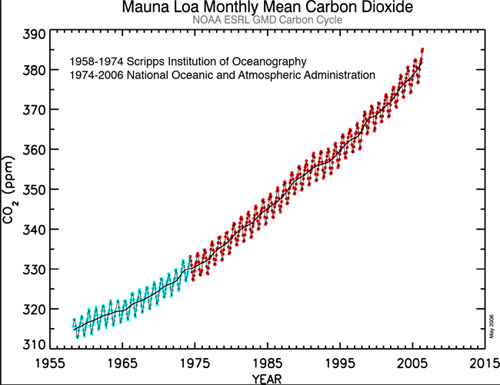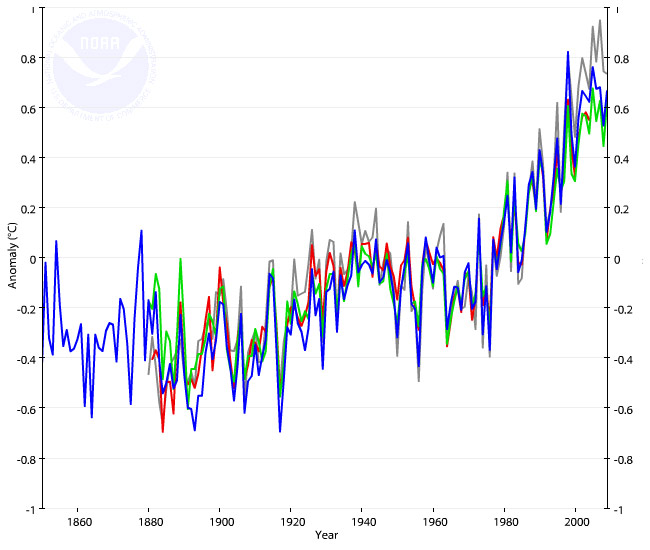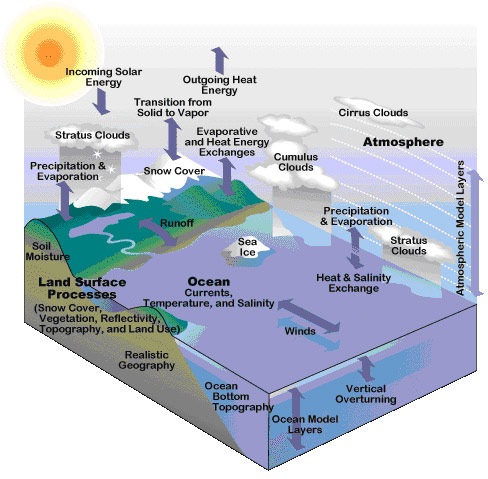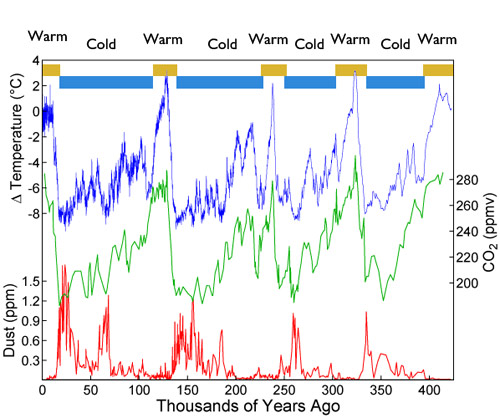Background of Policy Development for Anthropogenic Global Warming
Policies are rules of laws imposed to ensure the implementations of tactics chosen to fulfill the needs of a strategy that is support of a goal or objective. A goal or objective is often part of a project or a solution to a problem. A suite of policies or tactics comprise the means by which the strategy will be carried out. Single policies rarely are sufficient to cover the entire scope of a strategy. Finally it may also take several strategies to achieve the goals need to solve a particularly difficult problem or complex project.
In this case the problem we are going to tackle is the not-so-recent rise in greenhouse gas concentrations (especially CO2 from human activities) that appears to be causing significant imbalance in the heat flux of the planet resulting in a net warming of the atmosphere, ocean, and ultimately of the earth. This warming is a problem because it is insidious. The warming is very slow on a human time scale, so slow that most people who are younger than about 50 years old really are unable to say they have any experience of a warming trend. This means that the understanding of global warming is essentially from being told that it is happening, not from being able to personally say that it has been obvious in their lifetimes. Furthermore, the defined danger from global warming is a creeping danger that will last generations if not brought under control fairly quickly. So the danger for most people is not personal and certainly not perceived to be personally life-threatening. This makes it easy to stand by and debate what should or should not be done. For our children and grandchildren, who have not yet really felt the effects, it is not going to be so impersonal.
Most of the children being born today will see well into the 2100s and will be strongly affected by the social upheaval that will result from rising sea level causing human migrations on a grand scale, increased disease vectors, increased loss of agricultural and forest crops from pests, more extremes of storms, rainfall and droughts depending on where you happen to live, salt intrusion into coastal water supplies, melting ice off mountains that normally supply water to millions of people, and many more effects. These will be combined with other problems the world faces from increased pollution, overuse of many resources, increased burden of population increase and dwindling agricultural land areas. Finally, although many animals and plants will be able to adapt to the changes, still many more will not be able to do so, and the continuing drop of biodiversity which lessens our resilience to natural disasters will accelerate. Resource wars are already starting to become apparent and may be linked to rising ethnic intolerance in areas short of water and food. These are likely to increase in intensity. So while most adults today won’t be that much affected, their grandchildren certainly will have to face serious problems of our making if we do not act to control the anthropogenically caused global warming.
Continue reading →




